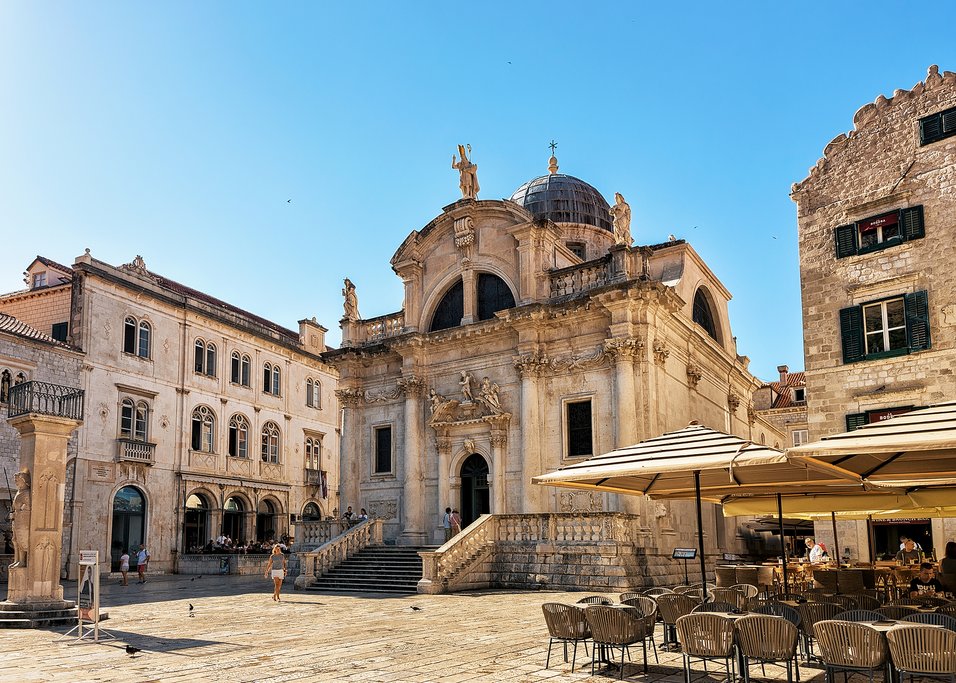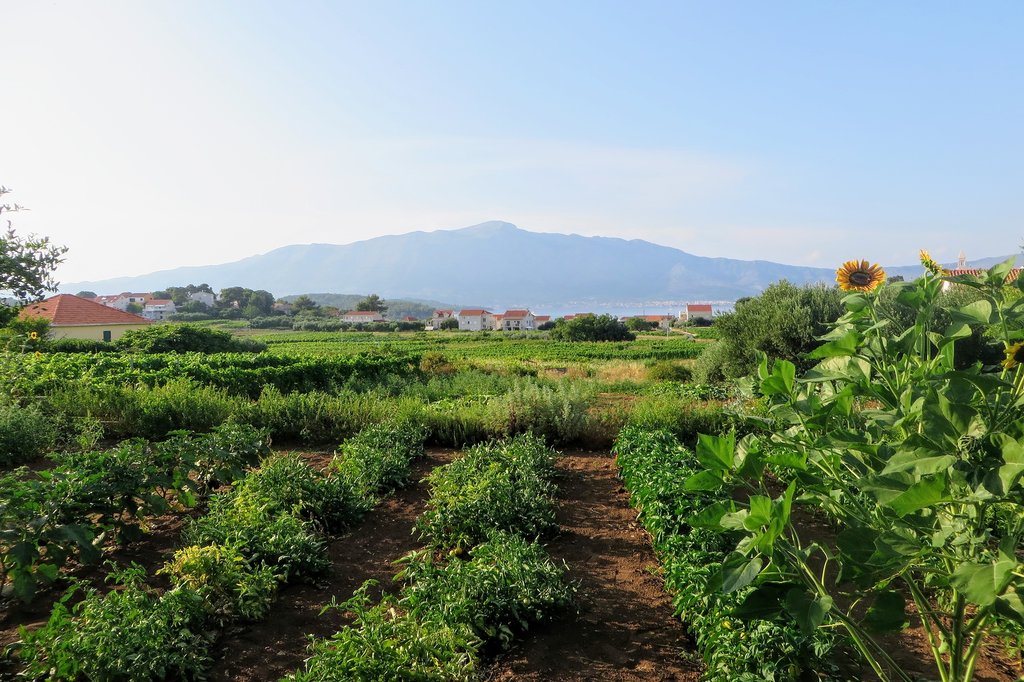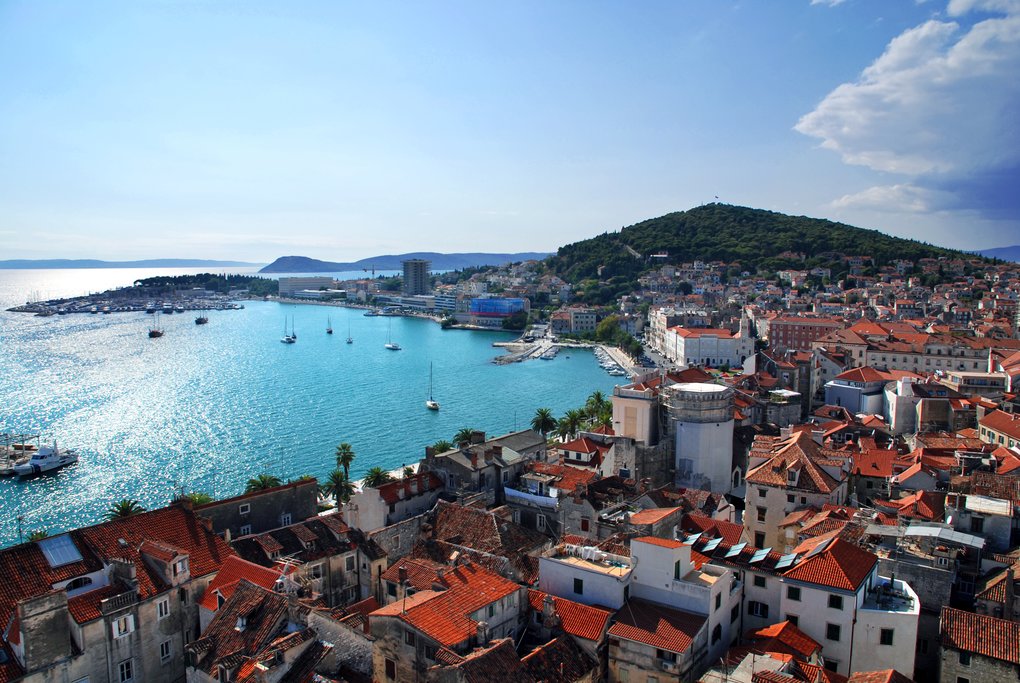Highlights
- Admire the Baroque buildings of Dubrovnik's Old Town
- Tour the impressive parapet of Europe's longest defense wall in Ston
- Sample Grk and Posip white wine from Lumbarda on Korcula
- Walk Split's 1,700-year-old stone-paved streets, leftover from Roman times
- Sail, swim and snorkel around Vis Island off the coast of Hvar
Brief Itinerary
| Day | Highlights | Overnight |
|---|---|---|
| Day 1 | Arrive in Dubrovnik | Dubrovnik |
| Day 2 | Historical Walking Tour of Dubrovnik | Dubrovnik |
| Day 3 | Transfer to Korčula via Pelješac Peninsula | Korčula Town |
| Day 4 | Cycling & Wine Tasting Tour in Lumbarda | Korčula Town |
| Day 5 | Ferry to Hvar, Sea Kayaking Around Pakleni Islands | Hvar Town |
| Day 6 | Day Trip Sailing Excursion to Vis Island | Hvar Town |
| Day 7 | Ferry to Split, Walking Tour of Split | Split |
| Day 8 | Day Trip to Krka National Park & Šibenik | Split |
| Day 9 | Transfer to Zadar, Explore | Zadar |
| Day 10 | Transfer to Plitvice Lakes National Park | Plitvice Lakes National Park |
| Day 11 | Sunrise at Plitvice Lakes, Transfer to Zagreb | Zagreb |
| Day 12 | Depart Zagreb |
Detailed Itinerary
Day 1: Arrive in Dubrovnik

Upon arrival at the airport, you'll drive to your hotel to check in. Depending on your arrival time, the rest of the day will be yours to settle in and explore the historic city on your own.
Often referred to as the "Pearl of the Adriatic," Dubrovnik is a world-renowned city of exceptional charm. Take some time to explore its 16th-century stone walls, including the Minceta, Lovrijenac, and Revelin fortresses, visit Onofrio's Fountain and the Church of Saint Blaise (St. Vlaho), and stroll along the limestone-paved Stradun, Dubrovnik's main street to get your bearings. Dubrovnik also offers excellent nightlife and some of Croatia's best restaurants and wine bars.
In the late afternoon, hop aboard a cable car and ride to the top of Srđ Mountain for stunning views of Dubrovnik and the nearby Elafiti Islands. For some exercise, you can walk back down the hill while enjoying views of the city below.
Day 2: Historical Walking Tour of Dubrovnik

Start your day early (around 8 am) to avoid the crowds and embark on a tour of Dubrovnik, where you'll meet your expert guide outside the entrance to the medieval city at the 16th-century Pile Gate. Entering Old Town, you'll uncover centuries of the city's rich history as you listen to stories of local life and legends and of the importance Dubrovnik once held in the era of the Republic. Highlights include Onofrio's Fountain, the 15th-century Rector's Palace, Luza Square, the Church of St. Blaise (St. Vlaho), and the café-lined streets of Brsalje Street.
After touring the streets and alleys, you'll head for Lovrijenac Fortress as well as the city's impressive defensive walls, the second-largest set of city walls in the world. At certain places, the wall rises 75 feet (23 m) high, offering excellent vantage points for photos of the coastline.
For the rest of the afternoon, explore Dubrovnik and its surroundings on your own or enjoy the afternoon sun on the nearby beaches. Come early evening, you can get stunning panoramic views over the city and Adriatic by taking the cable car up to Srđ Mountain before descending back down for dinner at one of Dubrovnik's great restaurants.
Day 3: Transfer to Korčula via Pelješac Peninsula

Today you'll leave Dubrovnik behind and transfer about an hour northwest to the Pelješac Peninsula as you make your way to Korčula. En route, stop in the medieval city of Ston to explore one of the longest defensive stone walls in Europe (originally built to keep predators away from the town's saltpans) and discover the importance this area held in the 14th century. Enjoy beautiful views over Ston and its glittering saltpans—one of the oldest and still active in the Mediterranean—from a parapet walkway on Ston's 3,937-foot (1,200 m) wall.
Reward your efforts with a light meal of Ston's famous fresh oysters or mussels accompanied by a glass of local Dingač red wine. Should you choose, you can take a tour of one of the area's family-run wineries for a further sampling of Dingač's famous reds.
When you're ready, continue your journey to Orebić to catch the one-hour ferry to Korčula. Once on the island, the afternoon is yours to discover Korčula's numerous restaurants, taverns, shops, and bars as you roam the maze of gray stone houses, alleys, churches, and squares. Check into your hotel in Old Town before heading out to explore, either on foot or perhaps on a rented bicycle, traveling from the town center to one of the secluded beaches on the island. You also might want to sample Korčula's delicious Grk and Pošip varietals of white wine.
Driving time (Ston to Orebić): 1 hour
Ferry time (Orebić to Korčula): 30 minutes
Day 4: Cycling & Wine Tasting Tour in Lumbarda

Spend the day on a cycling tour (private or with a group) across the island from Korčula Town to Lumbarda, with stops along the way to visit beaches and wineries. Pick up your bike and meet your guide in Korčula and ride out of the town south toward Lumbarda. You'll cycle through fields, villages, and wineries, covering asphalt, gravel, and dirt roads with vistas opening up to the Adriatic Sea as well as to the impressive Mount Ilija on the nearby Pelješac Peninsula.
This gentle route explores the ancient and historic sites of the eastern side of the island as you work your way to the spread-out village of Lumbarda. Boasting beautiful beaches and centuries-old winemaking traditions, Lumbarda is home to Grk, a white grape variety that will pair well with your lunch or dinner. Some of Croatia's best white wines are produced on Korčula, and you won't be left wanting.
You'll also have the opportunity to visit Bire Winery, a family-run winery that produces Grk wine, as well as its own varietals, including a rosé. All the wineries in the area produce Grk, which is unique to this region due to its sandy soil and Plavac Mali (a red grape grown extensively across South Dalmatia that acts as a pollinator for the Grk vines).
Spend some time relaxing on one of Lumbarda's beaches before returning to Korčula Town for the evening.
Cycling time: 3-5 hours
Chat with a local specialist who can help organize your trip.
Day 5: Ferry to Hvar, Sea Kayaking Around Pakleni Islands

Catch a morning ferry from Korčula to Hvar and get settled into your hotel. The most popular island in Dalmatia, Hvar draws visitors for its natural setting, mild climate, and historic town of the same name. You'll have the rest of the morning to explore Hvar Town, where you can visit St. Stephen's Cathedral or climb the steps to the terrace outside of the historic Arsenal to enjoy views over the harbor and the surrounding area.
In the afternoon, pack your swimwear and towel and head to the beachfront for your guided kayak and snorkel trip to the Pakleni Islands. The islands are the most beautiful part of the Hvar Riviera and are a favorite retreat for locals seeking to escape the summer heat. Altogether, there are 14 wooded and rocky islets, which you will get a chance to explore by kayak.
Ferry time: 1.5 hours
Day 6: Day Trip Sailing Excursion to Vis Island

Take the day to enjoy the sun and sea from the vantage of a private sailboat (with a skipper) as you make your way to the small, nearby island of Vis. You'll depart from Hvar Port on the western coast of the island for a leisurely full day of sailing. Lunch is arranged on the boat, where there will be time to drop anchor for swimming and snorkeling before docking to explore some of the island's beaches and quaint towns, like the small fishing town of Komiža and Vis.
You might consider hiring a guide to tour the ancient Roman ruins, like the thermae (public bath), the Levaman Fortress, and St. Jerome's Church and Monastery. And if crowds don't deter you, you make your way to Biševo Island, a popular destination to see the mesmerizing iridescent blue waters of the Blue Cave (Modra špilja). And if there's time and interest, visit Ravnik Island, off the southern coast of Vis, to swim inside the Green Cave—a special treat as you aren't allowed to do so in the Blue Cave.
Day 7: Ferry to Split, Walking Tour of Split

In the morning, you'll catch a one-hour ferry from Hvar to Split to check into your accommodation before setting out to explore your surroundings on a walking tour. An ancient coastal city founded 1,700 years ago by Roman Emperor Diocletian, Split's Old Town includes a number of impressive sites, including Peristyle, Cathedral of St. Dominus, the Piazza, and Diocletian's Palace, one of the best-preserved Roman buildings in the world.
Depending on a time that suits you, you'll meet your local guide for a private tour of Split's popular attractions, where you'll start in Peristyle Square, taking in the 3,500-year-old sphinxes Diocletian brought back from Egypt before exploring the 4th-century Diocletian's Palace. Other noteworthy attractions include the seafront Riva, the Iron Gate, Pjaca Square, and the 15th-century Town Hall.
Day 8: Day Trip to Krka National Park & Šibenik

Krka National Park is just over an hour's drive away from Split and is a nice place to visit in the morning before the crowds arrive. You can explore Krka on your own by foot or by rental bike, choosing from a number of trails (the shortest being a mile-long (2 km) boardwalk through waterfalls and small lakes).
Try to visit a couple of sections of the park, including Skradinski Buk, the largest waterfall in the park. After Skradinski Buk, head to Roški Slap, where you can take a short walk across the river to a small set of rapids said to resemble a pearl neckless from above. At Roški Slap, there's a restaurant that serves locally produced prosciutto, cheese, and seasonal salads. Besides waterfalls, the park is also well known for its multiple endemic species of birds, fish, and amphibians.
After spending the morning in Krka, head to the coastal town of Šibenik for the afternoon. A true Croatian town founded by the Croat king Petar Krešimir IV in the 11th century, Šibenik is home to impressive fortresses, music festivals, and medieval gardens. Start with a visit to the famous St. James' Cathedral, a UNESCO-protected site for good reason, before selecting a restaurant for your dinner—perhaps Pelegrini, a restaurant and wine bar just above the cathedral. Return to Split in the evening.
Driving time (Krka to Šibenik): 20 minutes
Driving time (Šibenik to Split): 1.5 hours
Day 9: Transfer to Zadar, Explore

Today, you'll spend time exploring the Adriatic coast as you make your way from Split up to Zadar (about two hours). When you arrive, check into your hotel before setting out to familiarize yourself with the ancient capital of Dalmatia.
A historical center of the Dalmatian Coast, Zadar is famous for its picturesque coastline full of islands and vibrant blue waters, as well as fresh seafood and unforgettable sunsets. Take the rest of the day to relax and explore. You may wish to stroll along Zadar's Riva, a wide ribbon of stone paths bordered by a grassy park on one side and the sea on the other. It runs along Old Town's waterfront, where it comes alive at night with vendors and Dalmatian capella groups called Klapa that serenade the passersby, including folks on yachts who dock there.
Take in a legendary sunset (Alfred Hitchcock is on record saying they're the best in Zadar) from Café Brazil before discovering the pretty patterned lights of the Monument to the Sun while listening to the nearby Sea Organ.
Day 10: Transfer to Plitvice Lakes National Park

After breakfast and packing up your belongings, you'll drive 1.5 hours east to Plitvice Lakes National Park, the first Croatian national park—and one of the most popular parks in the country.
Plitvice Lakes National Park is Croatia's natural masterpiece, gorgeous at any time of year. A must-visit for any traveler to Croatia, the UNESCO-protected park is comprised of an exquisite collection of 16 glassy emerald green and blue travertine lakes, more than 90 cascading waterfalls that seemingly cover every corner of the park and numerous caves. The terraced lakes are surrounded by beech and pine forests and are home to extensive wildlife.
Here, you can request a private, expert local guide to lead you through the park along the wooden paths and bridges to show you the most impressive points of interest and explain the significance of its history and natural features. After your tour, you will have some free time to continue exploring, or you may wish to bring a bought lunch (and a bottle of wine!) with you to enjoy a picnic.
Day 11: Sunrise at Plitvice Lakes, Drive to Zagreb

Early morning is one of the best times to visit Plitvice Lakes before the midday crowds arrive. You can explore the park on your own or opt for a local guide who will take you on a number of defined routes of varying lengths throughout the park. After enjoying a leisurely morning in Plitvice, carry on your way north for two hours, venturing farther inland to Croatia's capital, Zagreb.
Settle into your hotel before venturing out to spend the rest of the day as you like. The city center is easily walkable, and the streets and parks are easy to navigate on foot. All the main attractions and restaurants are within walking distance. A gem of a European city, Zagreb is at once historic and new. It's filled with leafy green parks and Gothic/neo-renaissance buildings, yet there are also modern shopping complexes, outdoor malls, and endless dining and drinking options.
Consider heading out on a guided walking tour of the historic heart of the city. This involves walking from the main square to Zagreb's Upper Town and passing through local markets before reaching St. Mark's Square. Alternatively, you can visit one of the many museums and art galleries, like the Homeland War Museum, the Nikola Tesla Technical Museum, or the ever-popular Museum of Broken Hearts. Or stroll through the city center, enjoying 17th-century neo-baroque architecture found at Zagreb's Art Pavilion and Croatian National Theater.
Zagreb also has a number of beautiful city parks, which are great for exploring and people-watching, especially in the late afternoon. Maksimir is a great option, with a variety of cafés nearby to pick up a coffee for your stroll.
Day 12: Depart Zagreb

If you have a free morning before departing, make like a local and visit one of the many café-bars in central Zagreb. Try the pedestrianized section around Bogovićeva and Preradovićeva or the popular Tkalčićeva street for a morning coffee and pastry and to people-watch before you say farewell to Zagreb and head to the airport.
Driving time (Central Zagreb to the airport): 30 minutes
More Great Croatia Itineraries
Looking for more inspiration for your trip to Croatia? Check out these other Croatia itineraries, explore different ways to spend 12 days in Croatia, or discover the best time to visit Croatia.
